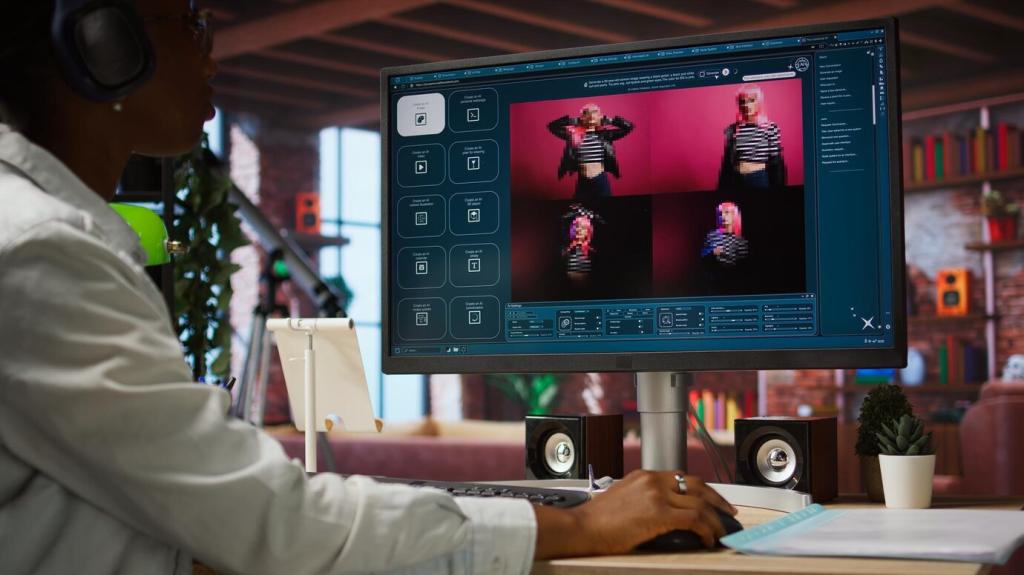Guide to Lighting in Photography: Illuminate Your Vision
Chosen theme: Guide to Lighting in Photography. Step into a bright, welcoming space where light becomes your most expressive tool, from sunlit moments to crafted studio brilliance—subscribe and journey with us as we sculpt stories with illumination.

Understanding the Nature of Light
Qualities of Light: Soft, Hard, and Everything Between
Soft light flatters textures and eases contrast; hard light carves shape and drama with crisp shadows. Study diffusion, size relative to subject, and distance, and you’ll instantly elevate portraits, products, and candid scenes with intentional mood.
Direction and the Story It Tells
Front light smooths, side light sculpts, backlight glows, and top light intensifies. Move your subject or your feet to change the narrative. A small shift in angle can transform ordinary moments into expressive, cinematic frames.
A Simple Take on the Inverse Square Law
Light falls off quickly as distance increases. Move a light closer for softer wrap and dramatic falloff; move it farther for even coverage. Mastering this principle helps balance background brightness without complicated calculations or confusing charts.
Working With Natural Light
Warm tones and long shadows create depth and romance during golden hour. Position your subject slightly off-axis to catch delicate highlights on cheeks and hair, then expose for skin while preserving the glowing rim of light.
Working With Natural Light
Clouds diffuse sunlight into a broad, gentle source that flatters faces and colors. Use dark backgrounds to maintain contrast. Encourage your subject to step near building edges for subtle direction and avoid flat, front-facing arrangements.


Mastering Artificial Light

Speedlights are portable, versatile, and great on location; strobes deliver power for freezing action; LEDs help you see light in real time. Match your tool to subject size, movement, and desired depth of field.

Modifiers and Light-Shaping Tools
Softboxes provide directional softness and control spill; umbrellas spread broadly for fast coverage; diffusion panels create clean, airy wrap. Consider size relative to subject, distance, and fabric type to dial contrast and edge definition precisely.
Exposure, Metering, and White Balance
Incident vs. Reflective Metering
Incident meters read light falling on the subject, reducing confusion from bright or dark scenes. Reflective metering reads what the camera sees. Compare both to understand discrepancies and choose exposure that protects skin and highlights effectively.

Portrait Lighting Setups That Work
Position your key light slightly above eye level and off to the side to form a cheek triangle for Rembrandt, or move closer to lens axis for loop. Adjust chin and shoulders to enhance sculpting and catchlights.
Tripods, Stability, and Smart Settings
Use a sturdy tripod, delayed shutter or remote, and mirror lock if available. Combine wider apertures with thoughtful composition. Prioritize highlight protection in bright signage while letting shadows breathe for atmosphere and intentional, moody depth.
Neon Nights and Mixed Color Stories
Leverage neon signs as key lights, then balance with ambient street lamps. Decide whether to correct or exaggerate color contrast. One rainy evening, a diner’s red glow turned a simple portrait into a cinematic, reflective moment.
Astro and Star Trails for Beginners
Find dark skies, use manual focus at infinity, and start with high ISO and wide apertures. For trails, stack multiple frames to reduce noise. Keep foregrounds interesting—trees, cabins, or rocks—to anchor cosmic motion with relatable context.
Post-Processing for Consistent Light and Mood
Match white balance and tint between frames before creative grading. Build presets that preserve skin accuracy and brand identity. Reference a hero image to keep warmth, contrast, and saturation coherent throughout galleries, campaigns, and client deliverables.
Post-Processing for Consistent Light and Mood
Subtle light shaping in post mimics real modifiers. Dodge to guide the eye, burn to control distractions, and target midtones for dimensionality. Keep changes gentle, honoring the lighting decisions you made while shooting on location.
Post-Processing for Consistent Light and Mood
Avoid over-smoothing skin or over-brightening eyes. Embrace natural texture and believable highlights. When edits respect the scene’s light, viewers feel present, connected, and willing to linger—exactly the response compelling photographs deserve.
